The Dalmatian pelican is an emblematic species for biodiversity in Romania, a kind of “uncrowned king” of wetlands. Under “Pelican way of LIFE” the dynamics of the populations of this species in the country is closely monitored. Enjoy the interview with biologist Sebastian Bugariu, the coordinator of Romanian Ornithological Society/BirdLife Romania (SOR), on the activities within the international initiative “Pelican Way of LIFE”.
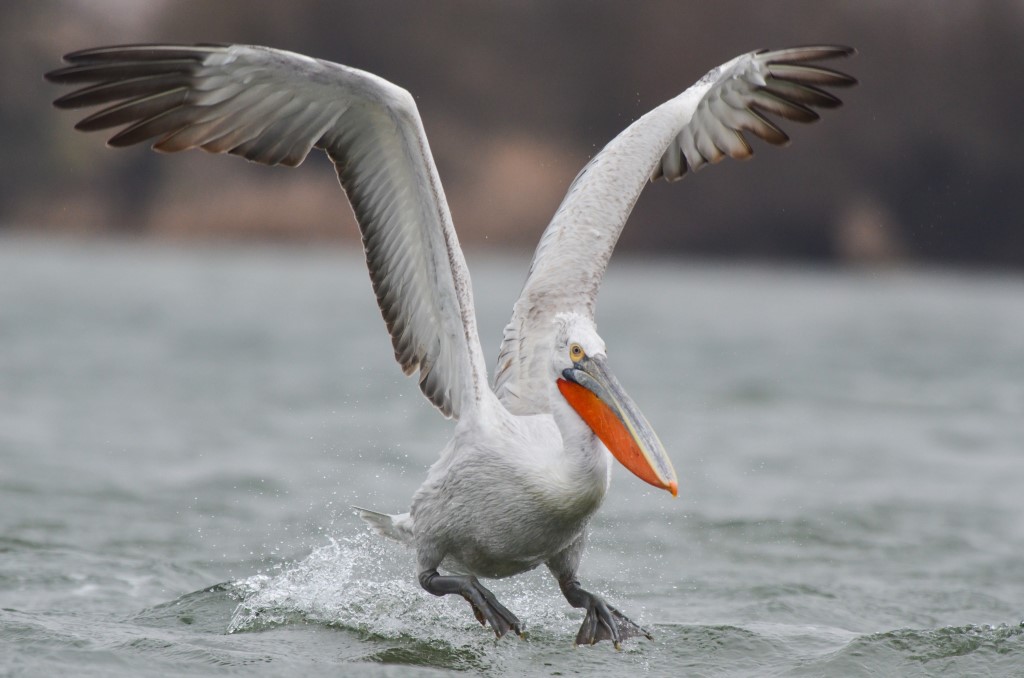
Andreea Oprea: When are the monitoring activities carried out and why are they necessary?
Sebastian Bugariu: We have three categories of population monitoring activities or censuses: assessment of the nesting population, which takes place in the spring, as well as synchronous spring and winter monitoring.
In terms of the spring monitoring, it takes place in mid-May and is a synchronous census organized by partners in all “Pelican Way of LIFE” countries: Romania, Ukraine, Bulgaria and Greece. In addition, four other countries, important for the distribution of the species, participate in this count: Turkey, Albania, Northern Macedonia and Montenegro. Thus, synchronous counting is performed in most of the range of Dalmatian pelican in Europe. The census is organized on the same day and, as far as possible, in the same time slot, in order to avoid multiple counting. It allows obtaining not only the data on the numbers of the Dalmatian pelicans, but also on the nesting population and age structure (immature or adult birds). These data help us to understand the demographics of the species (total numbers, survival rate, etc.) and its evolution in the future. Therefore, it is important that all countries in south-eastern Europe, that are in the range of the species, participate.
Winter monitoring is an assessment of the sites important for the species in all the project countries. During the assessment, we observe the areas where large numbers of Dalmatian pelicans gather in order to estimate the proportion of adult and immature birds, to check the color rings, and various other data as much as possible. However, the most important thing is to identify the areas that concentrate a large number of Dalmatian pelicans. This aspect is important both for the management of the respective areas and for seeing the dynamics of the species during the winter. In Greece, the winter monitoring is implemented in the western area only, not like the spring monitoring that takes place all over the country. In addition, the census takes place in neighboring Albania and Montenegro. It is organized in mid-November because the nesting season starts earlier in the south. For the species population in the Danube basin (Ukraine, Romania and Bulgaria) the winter count is performed synchronously in mid-December in order to have a clearer picture of the birds on winter grounds. In our country, the entire distribution area of the species is evaluated. In recent decades, Dalmatian pelicans have begun to nest earlier and earlier, influenced by the warmer weather at the end of winter. For example, this year the Dalmatian pelicans were nesting in the Tașaul colony in mid-February already.
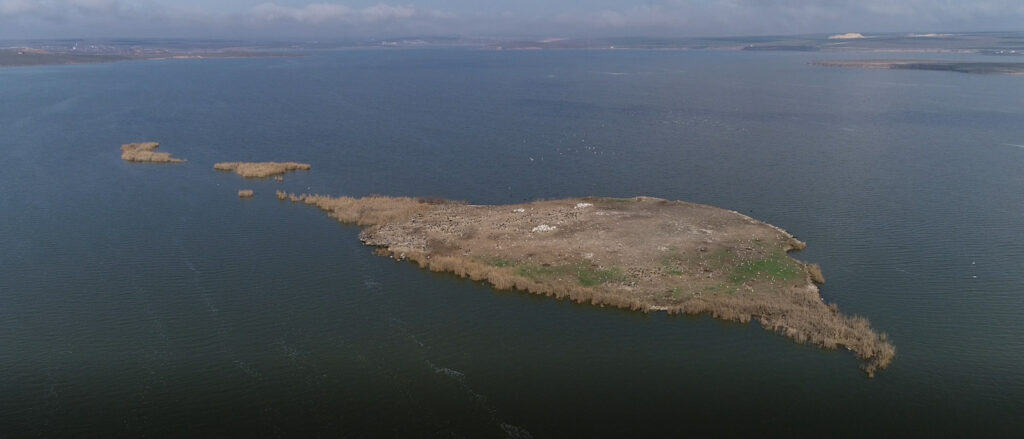
A.O.: What are the results of the last monitoring that took place in December 2021?
S.B.: A synchronous census was organized for two days in Romania, Bulgaria and Ukraine. The monitoring in Romania was implemented by 14 teams that tried to cover as much as possible of the wintering grounds of the Dalmatian pelican. Specifically, we are talking about the Mostiștei Valley, the Iezer Călărași area, the Lower Olt Valley and the confluence of the Olt with the Danube, Bistreț, the Danube Delta and the lagoon area, as well as the sites southwest of Dobrogea (Bugeac, Oltina, Danube, Vederoasa) and the Black Sea coast. During the trips to the Danube Delta and the lagoon area, our teams were accompanied by specialists from the Danube Delta Biosphere Reserve Administration (DDBRA), a partner in this project. Thus, in December 2021, we counted 691 Dalmatian pelicans in Romania. Teams in Bulgaria reported 1,469, a record number of pelicans compared to 2020 when only 812 were counted. Ukrainian scientists have witnessed 119 Dalmatian pelicans in the outer Danube delta and the Danube lakes.
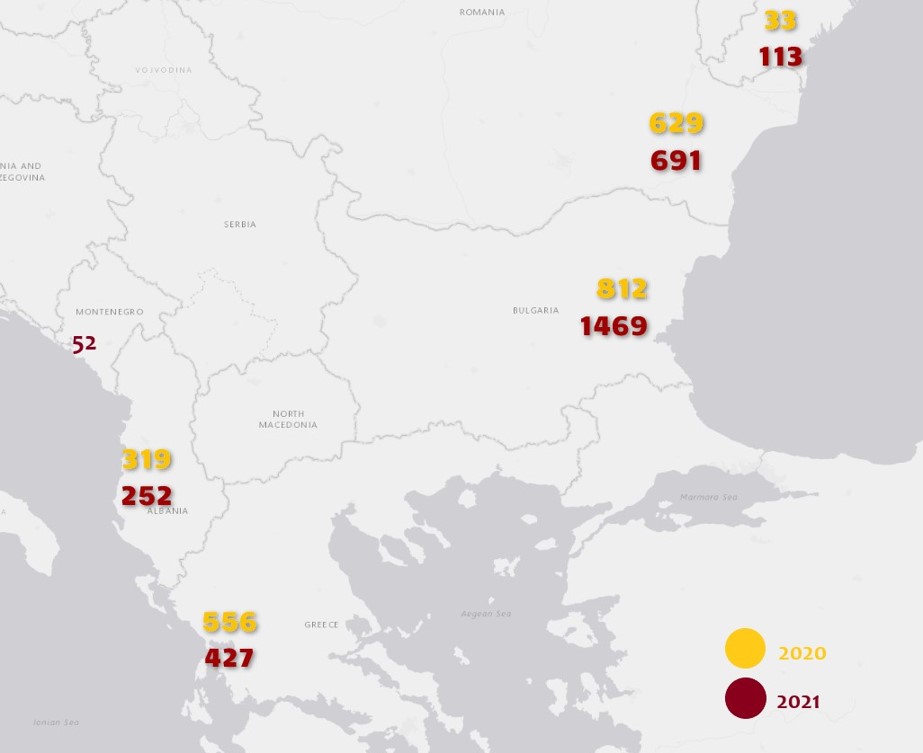
A.O.: Where do Dalmatian pelicans winter?
S.B.: Until a few decades ago, given that the winters were harsher and the periods of frost were much longer, Dalmatian pelican was considered a migratory species in the Balkans and indeed descended south, returning to the nesting areas in early spring. Now, however, the species is rather dispersive, migrates over shorter distances, and is concentrated in different areas along the Danube or elsewhere along the Black Sea coast. For example, during the winter pelicans stay in Bulgaria and Turkey, without going down much to the south. This is also because new feeding places have appeared and, not being a strictly migratory species, it returns earlier at the beginning of the nesting season.
The western population, which is monitored by the Greeks, is concentrated in the wetlands of the region. Here, the species does not actually migrate but gathers in the feeding areas right in that region.
Wintering grounds cover the entire Danube, including the Danube Delta where the colonies are located. Except that the birds are noticed in the different areas or scattered. Moreover, large enough flocks of pelicans also use other areas adjacent to the Danube or the Danube floodplain, such as the Lower Olt Valley which is a very large water body, with over 130 kilometers of dams and reservoirs. For example, considerable numbers of birds sometimes winter in the area from Vâlcea to the confluence of the Olt with the Danube. In Romania, the Danube population of the species does not stay in the nesting colonies area, but spends the winter feeding on the large lakes in the Danube floodplain and Danube Delta and has different places to roost along the Danube, or move south on the sea coast in the Burgas area. These population movements can also be seen based on the data obtained during the two last years.
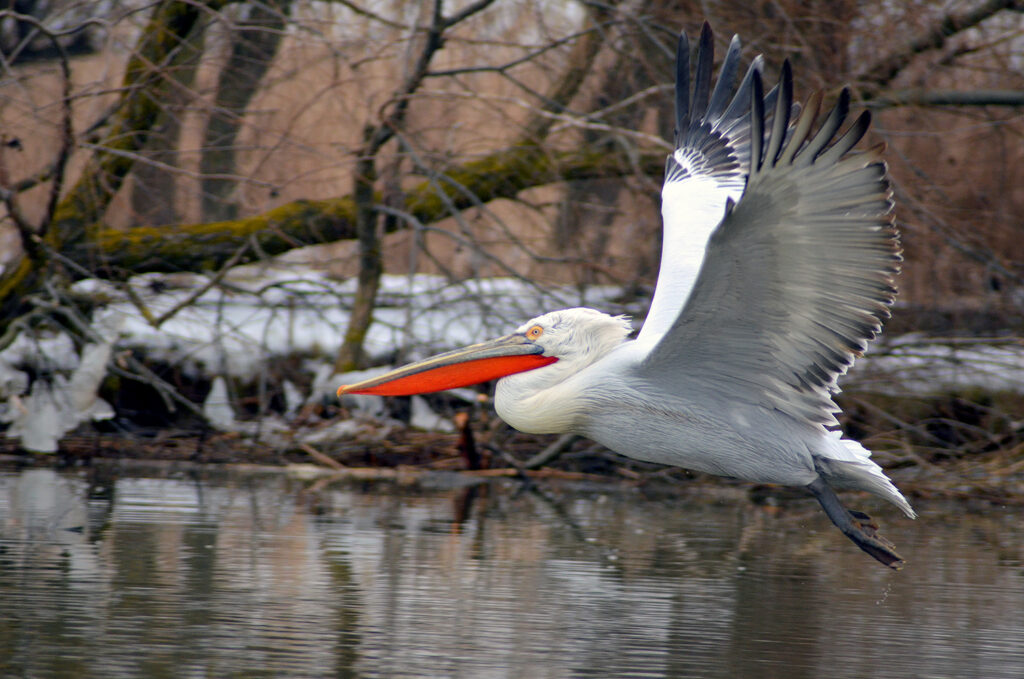
A.O.: What information does this monitoring give us? Can we talk about a comeback of the population of the Dalmatian pelican?
S.B.: Yes, we are on an upward trend. There are several major factors that have led to an increase in the population of the Dalmatian pelican. On one hand, the reduction of human disturbance to which the species has been subjected in the past. On the other hand, the milder winters of recent years have let birds stay longer in the region and though they are less vulnerable to migration and can find more food in this area. Another important factor is the increase in the number of nesting places, which has gradually led to an increase in the number of individuals. There are fluctuations in the population from one year to another, but we believe that the population is stable and the trend is generally upward. This increase in the population of the Dalmatian pelican is also due to the results of the conservation activities carried out in recent decades by various countries, including Romania. In addition, the monitoring effort is greater now, both in the nesting colonies, but also in the other areas, given that a count is organized in December, which is different from the traditional one conducted in January (MidWinter count). The longer the monitoring is done, the more the data obtained can be used for a trend calculation. Long-term monitoring of the Dalmatian pelicans is essential to observe the trends and dynamics of the species’ population, potential changes, but also to outline activities necessary for the conservation and protection of these birds.
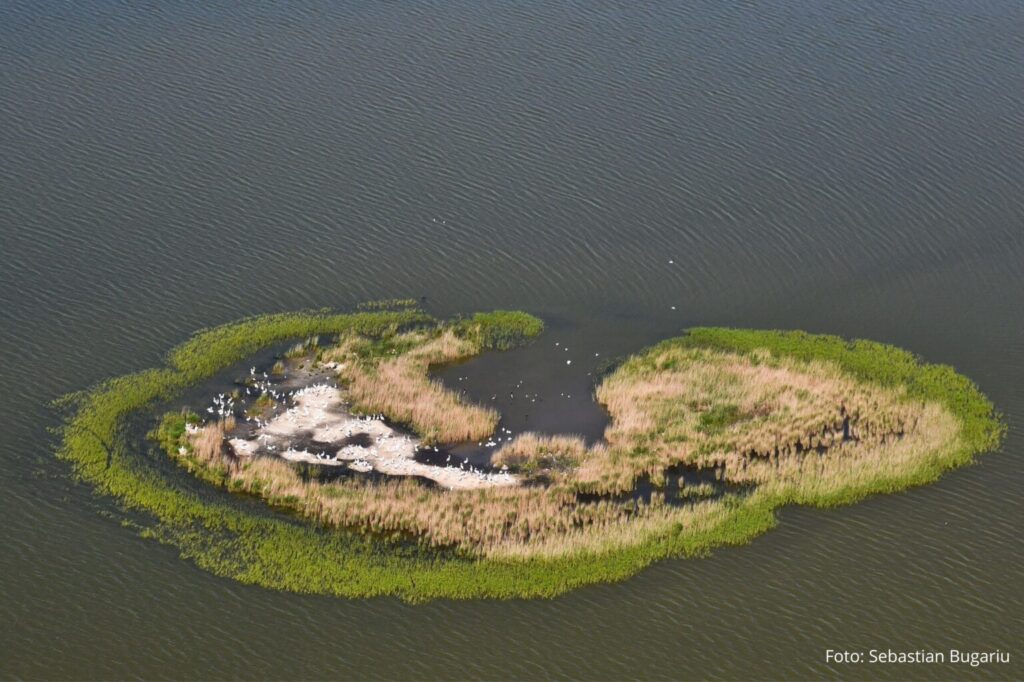
A.O.: What activities have been carried out so far within the “Pelican Way of LIFE” initiative and what actions are you going to implement?
S.B.: SOR ensured in Romania the constant monitoring of the only colony outside the Danube Delta Biosphere Reserve, which is located on Lake Tașaul, in addition to the Danube Delta colonies. This particular colony has grown significantly in recent years. At the same time, we identified several sections of power lines where cases of collision mortality were recorded. In these sections we will install the visual signaling devices for birds. We are going to equip some birds with satellite transmitters to track the movements of the pelicans in real-time. We will also ring juveniles with colored rings to be able to observe possible cases of mortality.
Colleagues from Bulgaria and Ukraine have set up artificial nesting platforms for pelicans. In order to study the movement of the species, partners in Greece and Bulgaria have attached satellite transmitters to some birds. In February 2021, for the first time in Bulgaria, the Dalmatian pelican was ringed and equipped with a satellite transmitter. For almost 10 months it was giving important data about the movements of this species. During these months the pelican traveled to five countries (Bulgaria, Romania, Turkey, Greece and Northern Macedonia) and flew over 4,676 kilometers. The longest distance he traveled in a day was 285 kilometers, and the highest point on his route was 1,987 meters above sea level. Unfortunately, he died in Greece due to a collision with a power line.
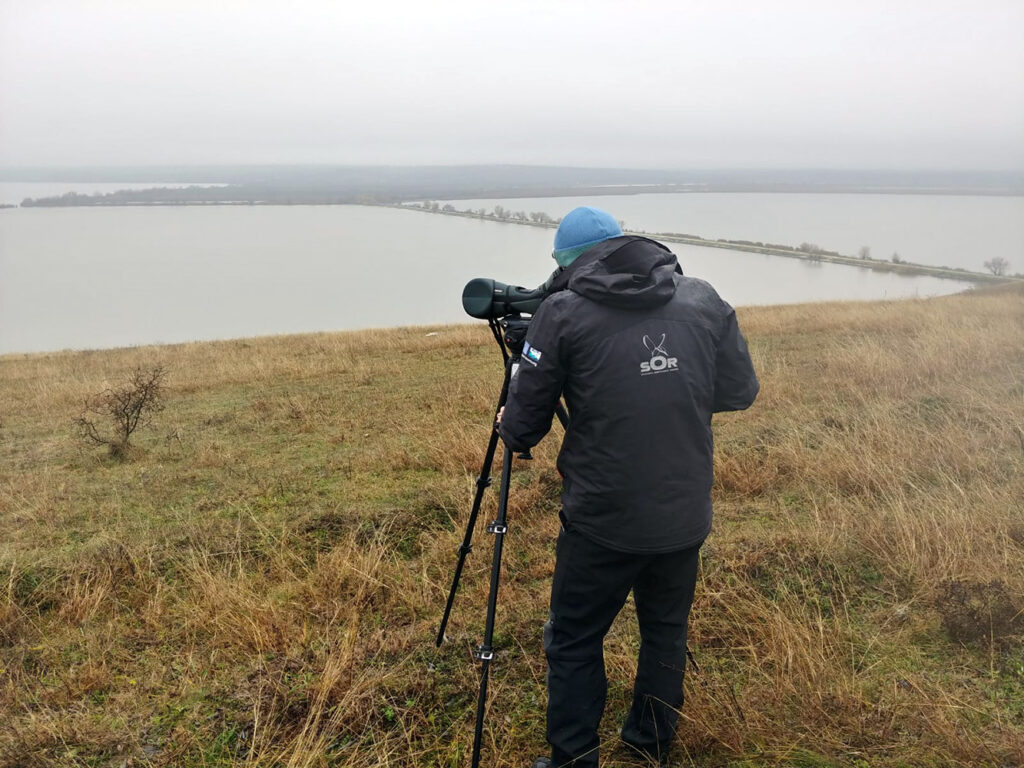
A.O.: How much do we know about this species?
S.B.: It is very interesting that, although it is one of the largest aquatic species in size, it still hides many secrets, including related to nesting flocks. In the western part of the distribution area, e.g. in the Balkans, including Romania, much more is known, partly because of the long-term monitoring and careful observation of the nesting colonies. We know quite well what the nesting population is and what conservation measures have been implemented in recent decades. It was quite quickly detected that the species had problems here and then more was done for it. The Dalmatian pelican has a very large range that extends over much of Asia and the Far East to China. Even though the distribution area is very large, the population is fragmented and some nesting colonies are located in the area that are very slightly investigated and scientists don’t know what the status of the population is there. For example, in Mongolia it is known that there is a declining trend, but the situation is not clear because the area is not being monitored. The same situation is in Russia. We have quite a bit of data from there. There are probably areas where the species nests, but there is no coordinated monitoring and the territories are huge.